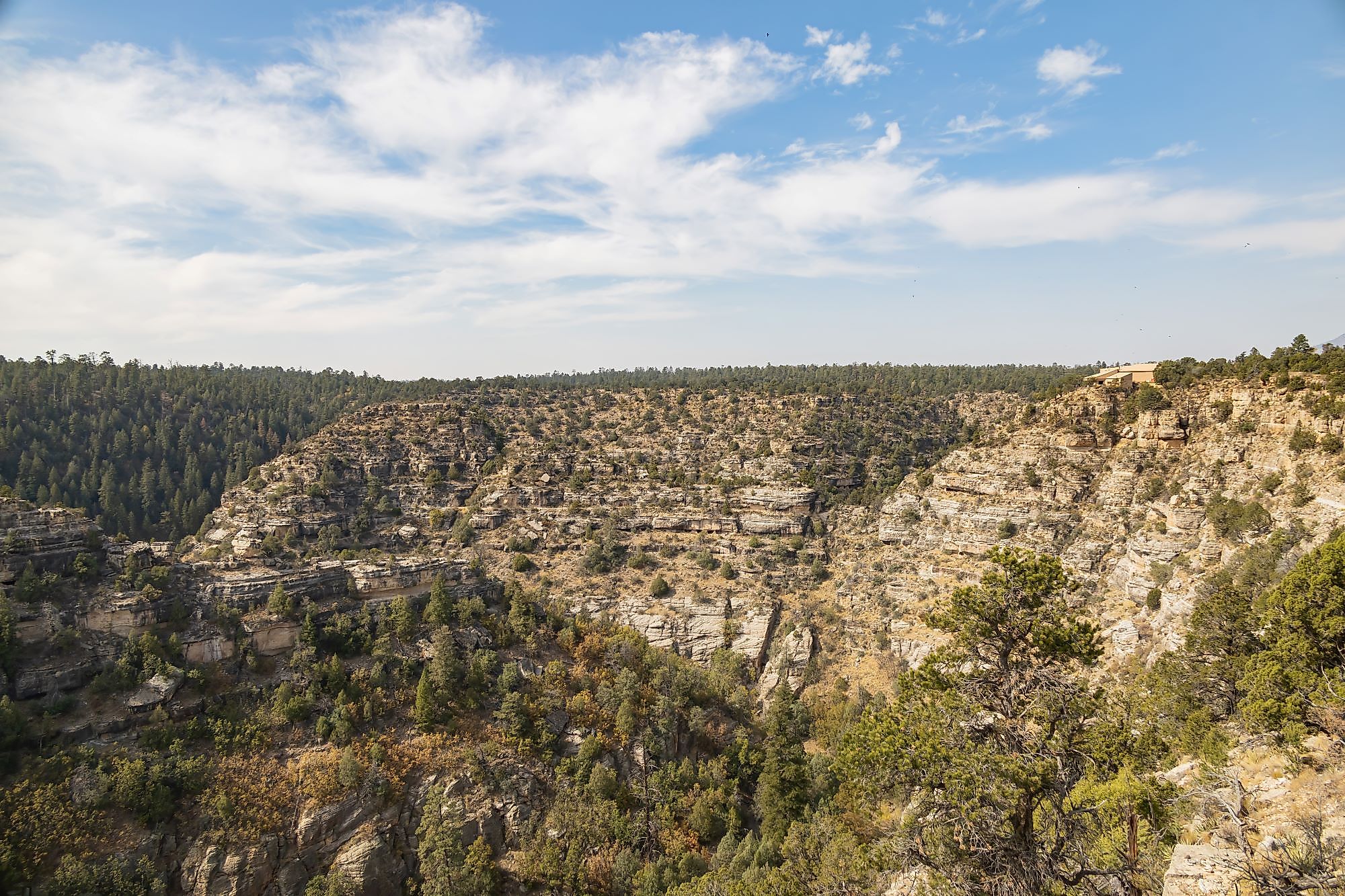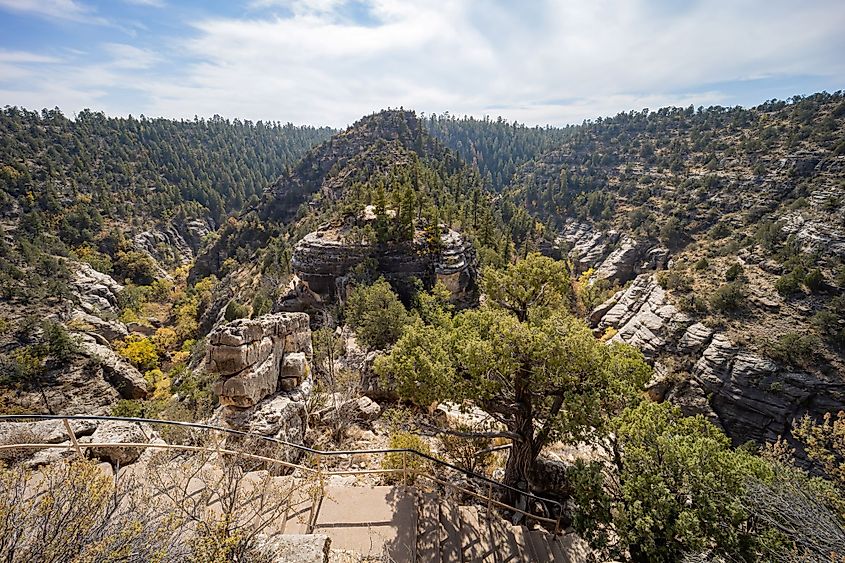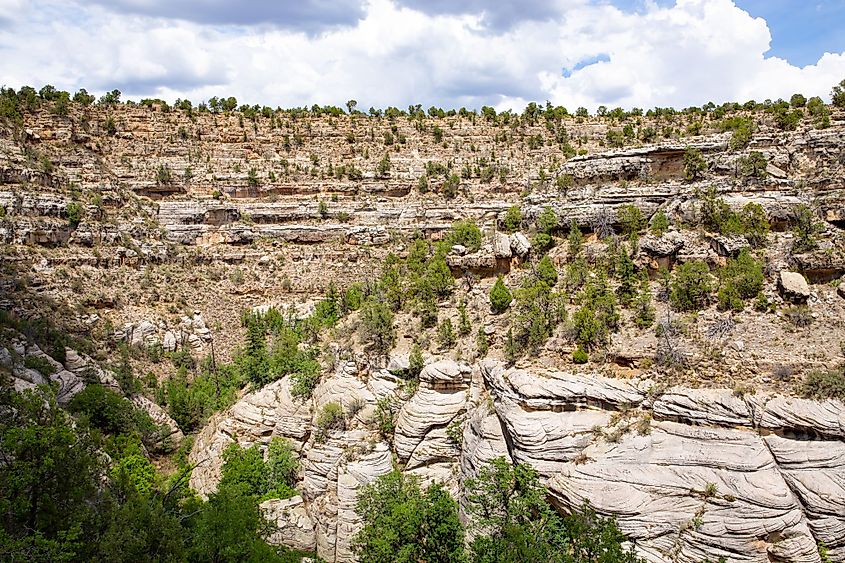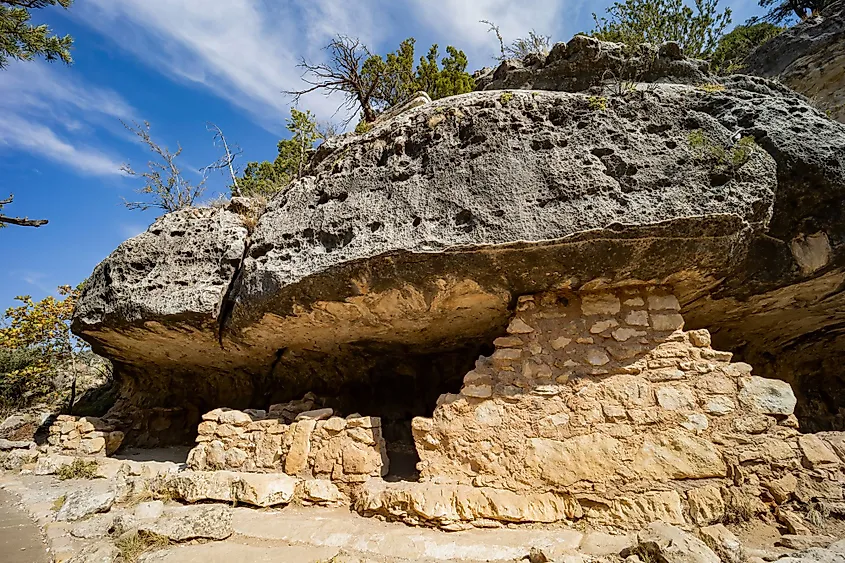
Walnut Canyon, Arizona
Walnut Canyon National Monument, one of Arizona's best-kept secrets, is a stunning display of geological cliff features with twisted limestone walls and cliffs home to a rich environment. The canyon, which Walnut Creek carved for nearly 60 million years, offers an incredible combination of breathtaking landscape and a wide variety of animal and plant species. Some of the earliest records of the Southwest are preserved by Walnut Canyon National Monument. These amazing remains, which are 10 miles southeast of Flagstaff, are remarkably well-preserved and kept for public enjoyment by the park service. Due to the range of microhabitats it supports, Walnut Canyon is unique. Because of the variety and amount of plant and animal life found here, it is referred to as a natural hotspot. Animals that migrate between the lower elevation pinyon-juniper woods and the higher elevation pine forests use the canyon as a route.
Geography Of The Walnut Canyon

Walnut Canyon National Monument, which lies in Flagstaff, Arizona, is home to 232 prehistoric sites that date back to the 1100s. The Sinagua people inhabited the area for hundreds of years and constructed more than 80 cliff homes. A portion of the 20-mile-long, 400-foot-deep canyon holding the 700-year-old Sinagua cliff ruins is protected by the 3,600-acre monument, which is located about 7 miles east of Flagstaff. One can tour the monument using one of the two main trails. The Rim Trail comes first. As it sounds, this trail travels for 0.7 miles along the rim while passing several ruins. For this trail, there is no further elevation change. The Island Trail is the second route. This particular loop into the canyon does see an elevation difference. There are 240 steps to the summit again, and it is a mile long. The National Park Service, however, cautions hikers against fully entering the remains due to possibly deadly rats of exceptional size that may harbor diseases and plagues. The canyon's floor is 350 feet lower than the rim, which is 2,040 m above sea level. A 1.4-km circle walk drops 56 m into the canyon, passing 25 Sinagua cliff house chambers.
Geology Of Walnut Canyon

The canyon was carved out of sandstone and limestone by Walnut Creek for 60 million years. Due to the retention of Walnut Creek as a water source for the citizens of Flagstaff, not much water goes through the canyon today. The creek's water occasionally overflows, joining the Little Colorado River on its way to the Grand Canyon. The Permian rocks that make up the top of the Grand Canyon rim are the same ones exposed in the area as geological formations. The Coconino Sandstone, a 275-million-year-old sandstone that bears testament to an ancient desert climate, is the oldest formation in the canyon. A shallow sea that penetrated the desert of the Coconino Sandstone 273 million years ago gave rise to the succession of gypsum-bearing shales and sandstones known as the Toroweap Formation, which is seen above. Finally, cliffs of the 270-million-year-old Kaibab Limestone, a series of carbonate rocks interbedded with siliciclastic rocks created in a shallow sea, mark the canyon's summit.
Climate Of Walnut Canyon
At 6,900 ft above sea level, Walnut Canyon National Monument receives 20 inches of precipitation annually. This amount is made up of two-thirds rain during the late summer monsoons and three-quarters snowfall (58 inches on average). Typically, summertime highs are in the mid-90s, while wintertime lows are close to zero. The wettest month is July, with an average maximum temperature of 28°C, while the year's coldest month is January, with an average high of 8°C and an average low of -12°C. The Canyon experiences snowfall in the winter; scorching sun, afternoon thunderstorms in the summer; and strong gusty winds in the spring.
Brief History Of Walnut Canyon

On November 30, 1915, President Woodrow Wilson created Walnut Canyon National Monument to protect the historic cliff houses. The monument was first overseen by the US Forest Service until being turned over to the National Park Service in 1934. On about 3,600 acres today, several archeological and natural treasures are protected. It was formerly a component of the San Francisco Mountain Reserve before becoming a National Monument. It was given that name in honor of the local Black Walnut Tree. The Sinagua people's diet included walnuts heavily. Artifacts demonstrate that the canyon was occasionally inhabited by Archaic people, who migrated over the Southwest thousands of years ago. The first permanent residents arrived later, thriving in the area from roughly C.E. 600 until 1400. This ancient civilization was known as Sinagua by archaeologists after the old Spanish name for the area, Sierra de Sin Agua, which translates to "mountains without water." Sinagua used the region around Walnut Canyon sparingly before the 12th century. They didn't fully colonize the canyon until approximately A.D. 1120, probably drawn by the steady stream and arable land during a period of drought and climatic unpredictability throughout the Southwest. The Sinagua constructed more than 80 houses within the canyon and occupied both rims, drawing cultural inspiration from Puebloan traditions throughout the Southwest. The Sinagua started abandoning their homes in Walnut Canyon after less than a century, most likely in small family groupings over time rather than in a sudden mass exodus. They had all vanished by the year 1225. They may have left the area due to the protracted drought, depleted resources, disease, enemy invaders, deposed religious figures, ominous "signs," and greener pastures.
Wildlife Of The Walnut Canyon
Walnut Canyon National Monument houses a diverse range of animals in a tiny region. Its challenging canyon topography, vegetation, low levels of human disturbance, and abundance of water all contribute to this. Additionally, several various ecological groups overlap in this area, resulting in a variety of microhabitats and the mixing of species that are often found in multiple locations and at different elevations. According to scientists, the monument is home to at least 69 species of animals, 28 species of reptiles and amphibians, and 121 types of birds. Along with golden eagles and grassland falcons, the region is home to elk, mountain lions, black bears, horned lizards, and more. Walnut Canyon houses some of the rarest raptors in the southwest United States, including the Mexican spotted owl, golden eagle, and northern goshawk. Wild turkeys can find refuge on the southern side of the canyon. For raptors, including Cooper's hawk, pointed hawk, red-tailed falcon, prairie eagle, flammulated owl, and pronghorn owl, the steep terrain and isolated side canyons provide habitat. Depending on local and regional environmental factors, including temperature, precipitation, snowfall, and other factors, animal populations at Walnut Canyon change with the seasons and from one year to the next.
Walnut Canyon now acts as a sanctuary for a greater community as a national monument. Walnut Canyon provides the ideal opportunity for admiring nature and learning about the past for thousands of people each year. This small canyon will continue to instruct and inspire people for many years to come with proper protection and cooperation from tourists.











